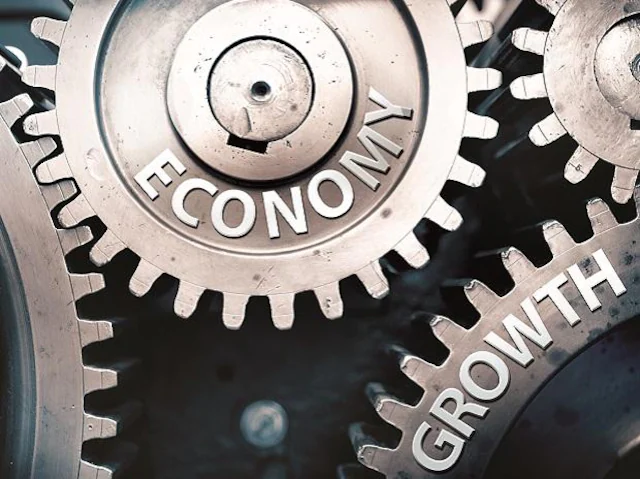India’s economy grew 6.3 per cent in the September quarter of FY23, boosted by robust activity in services, even as manufacturing output contracted unexpectedly, signalling uneven post-pandemic recovery in Asia’s third-largest economy.
While the Reuters and Bloomberg polls had projected 6.2 per cent growth for the quarter, the Reserve Bank of India was spot on with its forecast of 6.3 per cent.
In the June quarter of FY23, the economy had expanded 13.5 per cent due to a low base in the equivalent period of 2021-22, when economic activity was severely impacted by the Delta wave of the pandemic.
The data released by the National Statistical Office on Wednesday showed manufacturing contracted 4.3 per cent in the September quarter as profit margins of companies came under pressure due to rising input cost.
However, the services sector, including the three segments — trade, hotel, transports; financial, real estate; and public administration and other services — was the key growth driver with 9.3 per cent increase during the quarter.
Encouragingly, the trade, hotel, transport services for the first time surpassed the pre-pandemic level of the September quarter in FY20 by 2.1 per cent, in sync with robust recovery in the contact-intensive sectors.
GDP grew 7.6 per cent in the September quarter of FY23 over the comparable period in FY20, which was before the pandemic.
Gross value added (GVA) at basic prices grew 5.6 per cent in the second quarter of FY23 compared to 12.7 per cent during the preceding one.
Aditi Nayar, chief economist at ICRA, said while a normalising base expectedly flattened GDP growth in the September quarter relative to the previous one, growth relative to the pre-Covid period improved appreciably, which is a better gauge of the underlying growth momentum in this period.
“Net imports nearly doubled relative to the year-ago period (89 per cent Y-o-Y growth), exerting a drag on GDP growth. Moreover, discrepancies stood at a 10-quarter high in Q2, which suggests substantial revisions in the sectoral growth prints may lie ahead,” Nayar added.
Chief Economic Adviser V Anantha Nageswaran said India’s growth trajectory was even more credible, given the commodity price shock and the synchronised tightening of monetary policy across the world.
“In an uncertain external environment, domestic demand is expected to drive GDP growth. GDP growth is on track to reach 6.8-7 per cent in FY23,” he told reporters after the GDP data was released.
Growth in private final consumption expenditure (PFCE), or private spending, grew at 9.7 per cent as consumers splurged on high-value items despite inflationary pressures.
Government spending, however, contracted 4.4 per cent, signalling that both the Central and state governments kept their revenue expenditure in check during the quarter.
“We believe broad-based recovery in PFCE is some distance away because the current consumption demand is skewed towards goods and services consumed largely by the households falling in the upper income bracket,” said Sunil Kumar Sinha, principal economist, India Ratings.
Gross fixed capital formation (GFCF), which represents investment demand in the economy, grew at a robust 10.4 per cent, driven mainly by the capex push of the Centre and some recovery in private investment activity.
While Central capex spending grew 49.5 per cent in April-September over the same period in FY22, the combined capex of 19 large states grew 7.5 per cent during the same period.
However, the drag in India’s economic growth outlook is emerging from a widening trade deficit amid fears of recession in developed economies.
“In the coming months, sustained resistance in domestic consumption will continue to support India’s economy. Inflation and rising borrowing costs have so far not deterred consumption as witnessed in significant growth in retail and personal loans,” said Vivek Rathi, director (research), Knight Frank India.
Sinha said higher inflation and weak external as well as internal demand could impact GDP growth in the October-March period of FY23.
“GDP growth in the second half is expected to slow further unless inflation is tamed and global demand recovers,” he added.
Source: Business Standard, dated 01/12/22




